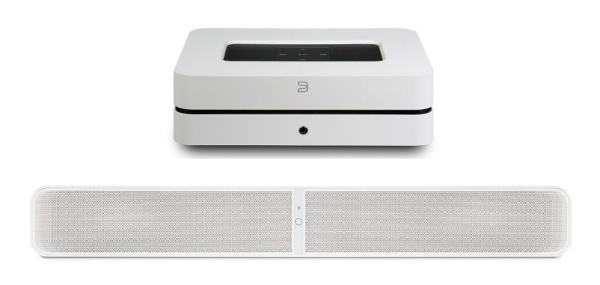Product News: Late Fall 2020 Edition Page 2

Helm Audio’s New $100 Amp/DAC Is THX-Certified
Helm Audio, a three-year-old company specializing in headphones and related accessories, is finally shipping the USB amp/DAC (digital-to-analog converter) it previewed eleven months ago at CES 2020. Designed to elevate sound quality for smartphones and other portable devices and, as CEO Eric Johnson puts it, “democratize audiophile quality through affordability,” the $100 Helm Bolt packs a serious punch.
In addition to decoding MQA files, the Bolt is THX-certified, which means it has passed a series of audio tests to ensure flat frequency response, low distortion, low noise, and an output that’s stable and strong enough to accommodate a wide range of headphones. The device senses headphone impedance and automatically adjust output voltage to the proper level, while its LED changes color to indicate sample rate: blue for standard definition (less than or equal to 48 kHz), green for high definition (greater than 48 kHz), and magenta for MQA.
PCM playback is supported at sampling rates up to 384 kHz and DSD playback at sampling frequencies up to 5.6 MHz but resolution is limited to 88.2 kHz or 96 kHz at the output. Unlike other USB devices, the Bolt has a 3.5mm minijack output but sprouts a short cable with a USB-C input at the end to isolate the connector from the digital-to-analog converter; the DAC also employs three oscillators for “superior frequency lock” over single-oscillator designs. Visit helmaudio.com for more information.

New Bluesound Update Adds ‘Stereo Surround’ Mode
Bluesound, sister to Canadian stalwart brands PSB and NAD, has announced a new software update for the Pulse Soundbar 2i ($999) and Powernode 2i streaming amplifier ($899) that adds a stereo surround mode. Developed by NAD, the mode mixes two-channel (non-Dolby) sources into the rear surrounds of a home theater grouping to create a more natural-sounding surround field.
Owners of these products are encouraged to experiment with the stereo surround mode, which heightens realism by extracting the natural ambience present in well-produced stereo recordings. As product manager Matt Simmonds explained, “Using Stereo Surround provides a subtle but highly natural and believable ambience from the surround channels, creating an immersive experience even when playing two-channel content.”
The BluOS 3.12 update also brings MQA support to Tidal and Tidal Connect as well as improvements to Dirac calibration for the NAD C 658, M10, and M33 streaming devices. Visit bluesound.com for more information.

HiFiMan Unveils its First Closed-Back Dynamic Headphones
HiFiMan, the New York-based personal audio/headphone specialist known for its planar-magnetic designs, is getting ready to ship its first closed-back dynamic driver headphones. The drivers used in the new HE-R10D headphones (shown, $1,499) have been optimized by applying nano-scale particles in a variety of patterns and layers — a technology developed for the company’s in-ear monitor that’s said to reduce distortion and improve clarity.
Reflecting the “best of closed- and open-back headphone designs,” each driver is encased in a large pinewood earcup to provide ample breathing room. The cups are fitted with “tranquility” earpads made with high-quality leather and a suede contact surface that focuses sound on the ear while providing sonic isolation and comfort. The headband is leather-encased memory foam attached to a steel skeleton.
High-quality silver-plated cables carry the signal to the drivers and a TRSS socket accepts a balanced or unbalanced input via one of three supplied cables: 3.5mm minijack, 6.5mm phone plug, and balanced XLR.
HiFiMan also introduced a near-identical looking planar-magnetic version, the HE-R10P, that sells for $5,499, marking the first time the company has offered a closed-back planar design in 15 years.
A BlueMini wireless adapter (attached to the HE-R10D headphones in the photo) is available option for either model. Visit hifiman.com for more information.
More Product News
Focal Releases Aria K2 936 Floorstanding Loudspeaker
Product News: Fall 2020 Edition
Epson Launches Under-$1,000 Home Theater Projectors
Anthem Unveils New A/V Processors, Receivers, Amps




